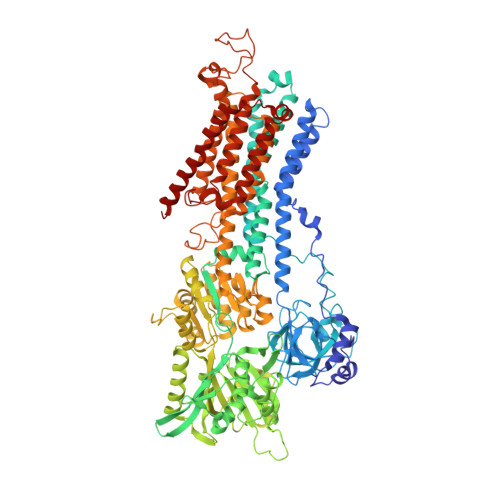Structural studies of P-type ATPase-ligand complexes using an X-ray free-electron laser.
Bublitz, M., Nass, K., Drachmann, N.D., Markvardsen, A.J., Gutmann, M.J., Barends, T.R., Mattle, D., Shoeman, R.L., Doak, R.B., Boutet, S., Messerschmidt, M., Seibert, M.M., Williams, G.J., Foucar, L., Reinhard, L., Sitsel, O., Gregersen, J.L., Clausen, J.D., Boesen, T., Gotfryd, K., Wang, K.T., Olesen, C., Moller, J.V., Nissen, P., Schlichting, I.(2015) IUCrJ 2: 409-420
- PubMed: 26175901
- DOI: https://doi.org/10.1107/S2052252515008969
- Primary Citation of Related Structures:
4XOU - PubMed Abstract:
Membrane proteins are key players in biological systems, mediating signalling events and the specific transport of e.g. ions and metabolites. Consequently, membrane proteins are targeted by a large number of currently approved drugs. Understanding their functions and molecular mechanisms is greatly dependent on structural information, not least on complexes with functionally or medically important ligands. Structure determination, however, is hampered by the difficulty of obtaining well diffracting, macroscopic crystals. Here, the feasibility of X-ray free-electron-laser-based serial femtosecond crystallography (SFX) for the structure determination of membrane protein-ligand complexes using microcrystals of various native-source and recombinant P-type ATPase complexes is demonstrated. The data reveal the binding sites of a variety of ligands, including lipids and inhibitors such as the hallmark P-type ATPase inhibitor orthovanadate. By analyzing the resolution dependence of ligand densities and overall model qualities, SFX data quality metrics as well as suitable refinement procedures are discussed. Even at relatively low resolution and multiplicity, the identification of ligands can be demonstrated. This makes SFX a useful tool for ligand screening and thus for unravelling the molecular mechanisms of biologically active proteins.
Organizational Affiliation:
Department of Molecular Biology and Genetics, Centre for Membrane Pumps in Cells and Disease - PUMPkin, Danish National Research Foundation, Aarhus University , Gustav Wieds Vej 10c, 8000 Aarhus C, Denmark.

















